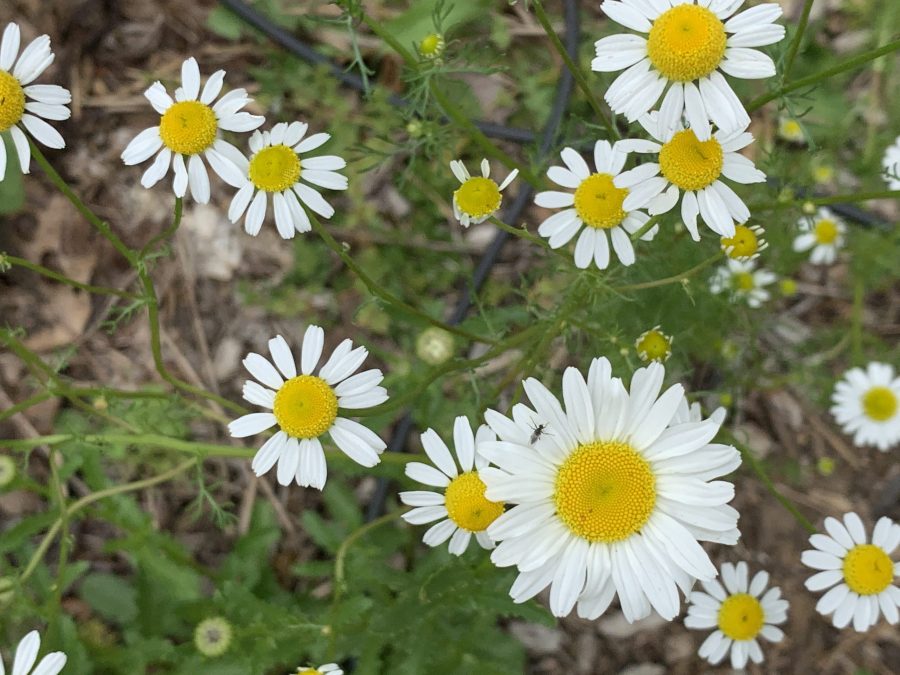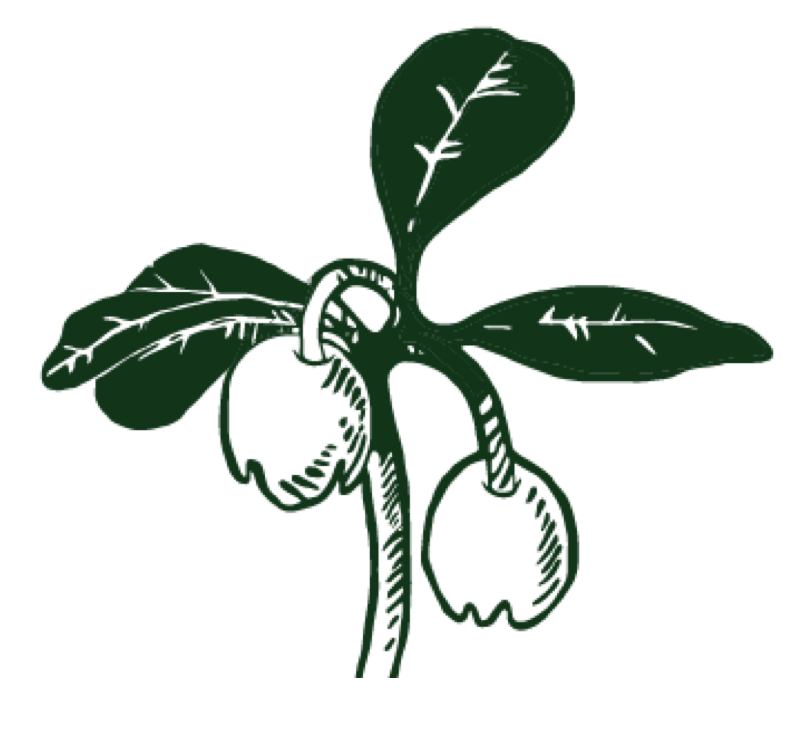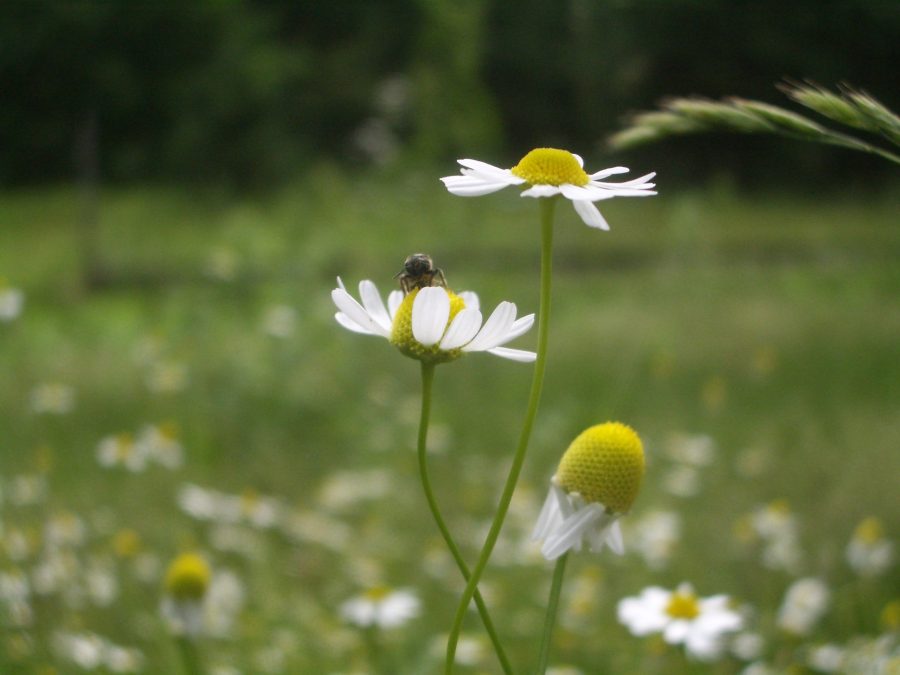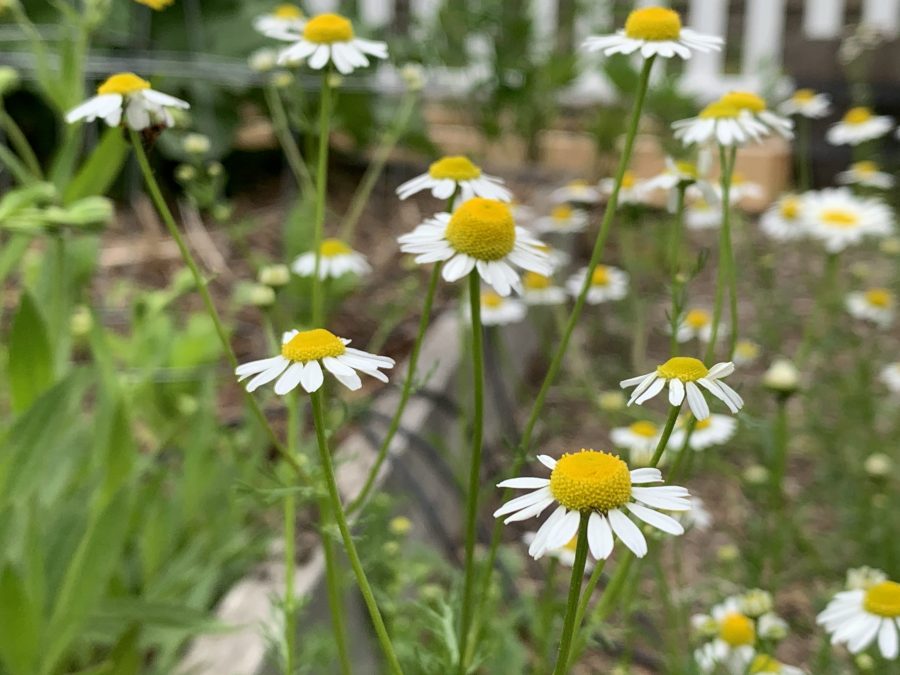Student Monograph ~
This Materia Medica assignment was written by Ali Bateman for the Home Herbalist Series.
Chamomile, German chamomile
Latin Name: Matricaria chamomilla (2)
Plant Family: Asteraceae (1,4)
Part(s) Used: flowers primarily (1,4), less commonly leaves (1), stems (1)
Key Actions: nervine (4), digestive aid (1,3), anti-anxiety (2,3,4), anti-inflammatory (2,3,4), anti-hyperglycemic (2), antigenotoxic (2), anticancer (2), pain-relieving (3,4), carminative (4), diaphoretic (4), mild sedative (4), antispasmodic (4), vulnerary (4)
Medicinal Uses:
Apigenin, which is a compound found in chamomile, was found to bind to certain brain cells (2). This may explain the sedative effect that chamomile can have on a person (2). Tea or tincture made from chamomile can help a person sleep (1,2,4). The dried herb makes a lovely sleep pillow on its own, or combined with hops and/or lavender (Extra comment from Education Advisor Ruth) and is calming (1,2,3,4). This calming effect (3) of chamomile can help with anxiety (3), insomnia (3) and agitation (3). Even tension headaches can sometimes be relieved by chamomile tea (Extra comment from Education Advisor Ruth). Drinking 3-6 cups of chamomile tea each day (1) may help relieve symptoms of post-traumatic stress disorder (1). Use of chamomile may also help relieve generalized anxiety disorder (2).
The anti-inflammatory (3,4) and pain-relieving (3,4) actions of chamomile have led to it being used to help ease colic (1,3,4) and the pain of teething in children (3,4). Particularly effective if in the form of a frozen popsicle! (Extra comment from Education Advisor Ruth) When a women is suffering from menstrual cramps, chamomile’s muscle relaxing action can help ease the pain (1,4). This can be achieved by either by rubbing an infused chamomile oil on the abdomen or by drinking a strong cup of the tea. (4)
As a digestive aid (1,3), it can resolve mild cramping of the gut (1), calm the stomach (1), as well as ease bloating (1,3,4), indigestion (3), diarrhea (1,4) and gas (1,3,4). Chamomile has also been shown to help with ulcers (1,2). Drinking a strongly brewed chamomile tea promotes digestion because of its bitter flavor (4).
Chamomile can also be used externally (1,2,3) to soothe itchy or red eczema (1,4), rashes (3), hemorrhoids (1,2), small wounds (1), acne rosacea (1) and sunburned skin (1). Externally, it can be used as a compress (1), steam (1), infused oil (1) or a bath (1). According to lab studies (2), substances found in chamomile can reduce inflammation (2), calm muscle spasms (2) and kill bacteria (2).
Other Uses:
A strong tea can be used as a hair rinse (1). Culinary – in many beverages. Rosemary Gladstar noted that it was chamomile tea that Peter Rabbit’s mother gave him after his encounter with Farmer John! (Extra comment from Education Advisor Ruth)
Medicinal Formats:
tea (1,2,3,4), tincture (1,4), steam (1), compress (1,2,4), infused oil (1,4), capsules (2), essential oil (4), hydrosol (4)
Cautions:
There’s a possible allergic reaction to chamomile (1,2,3,4) Chamomile may interact with blood thinners (2), sedatives (2), cyclosporine (2), cytochrome P450 substrate drugs (2). But overall chamomile is considered quite safe – these are rare issues but conventional medicine tends to be extremely cautious and list every potential side effect (Extra comment from Education Advisor Ruth).
(Education Advisor Ruth Droescher provided feedback and oversight on this assignment.)

Sources:
1. Kress, Henriette, Practical Herbs 2, Aeon Books Ltd. 2018
2. Memorial Sloan Kettering Cancer Center Chamomile 2019 https://www.mskcc.org/cancer-care/integrative-medicine/herbs/chamomile-german
3. Groves, Maria, Body into Balance. 2016
4. Herbs with Rosalee 2020 Chamomile https://www.herbalremediesadvice.org/chamomile-benefits.html
Ali Bateman's interest in herbs began when she was little and used to follow her dad around the garden asking him endless questions about all of the plants. He would encourage her to examine, smell, touch and taste the herbs that they grew. Then he had her help harvest them and dry them, and taught her how to use each plant. Ali and her husband currently live on several acres and have a large fruit, vegetable and herb garden. They have an adult son who also loves learning about herbs. In Ali's free time, she enjoy reading, hiking, biking, camping, and observing wildlife. She's currently enrolled in the Wintergreen Botanicals online Home Herbalist Series.
Chamomile photos by Maria Noël Groves
The statements made on this blog have not been evaluated by the FDA and are not intended to diagnose, prescribe, recommend, treat, cure, or offer medical advice. Please see your health care practitioner for help regarding choices and to avoid herb-drug interactions.



